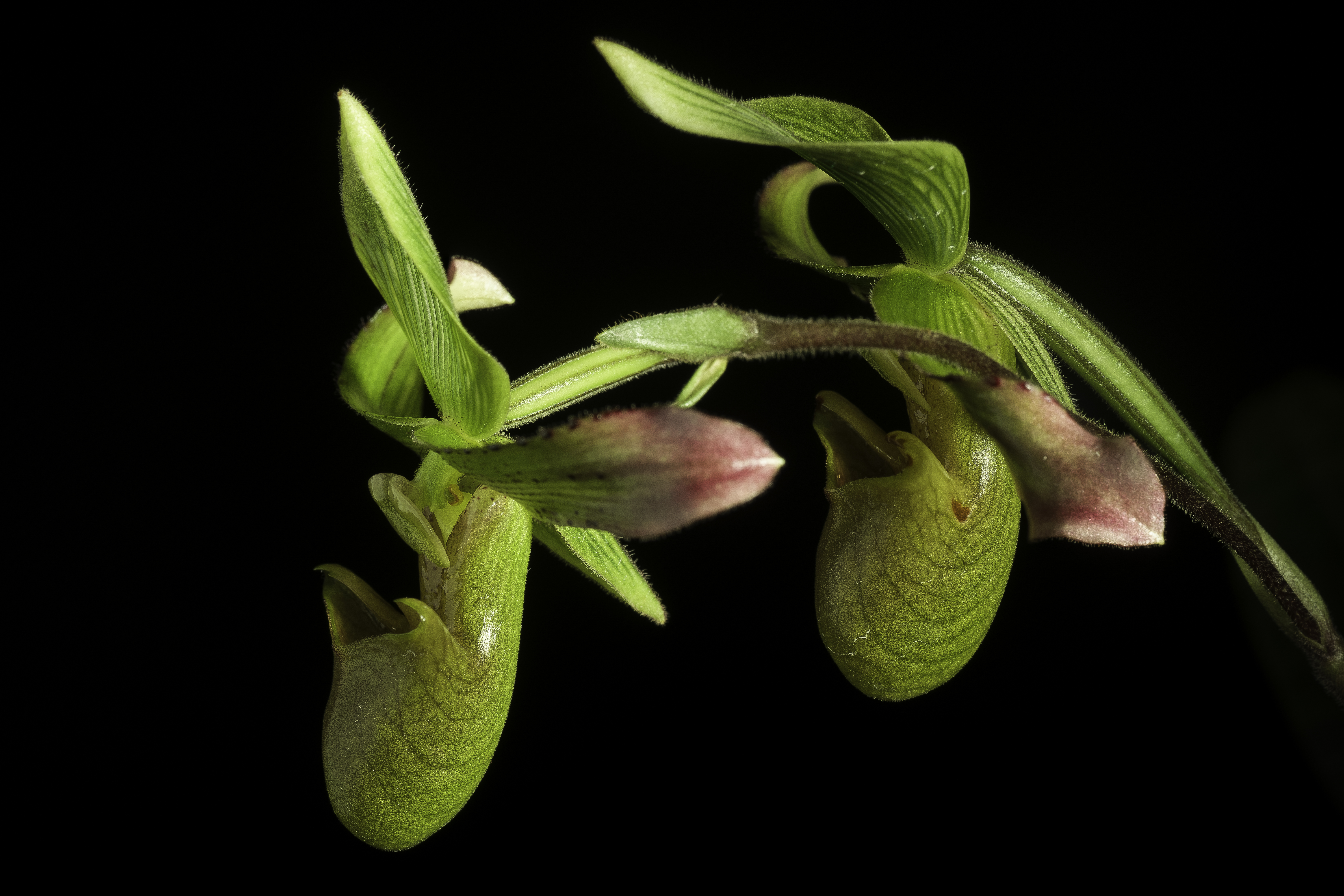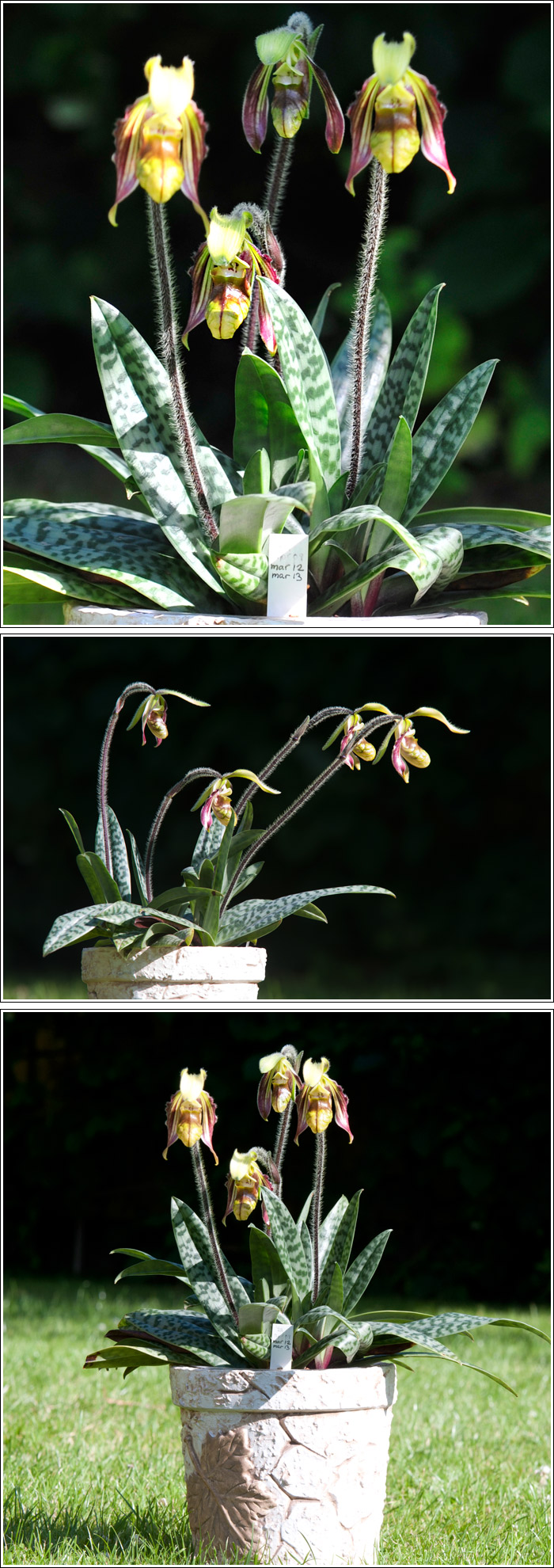katzenhai2
Well-Known Member
Hello,
this Paph. sangii has been brought to me by a friend. It has hardly any roots left, just enough to survive. It is producing two new shoots.


It is currently in rockwool and shaded (2000 Lux) at 75%-80% rH with 23°C / 73°F. Watering every two days with Peters 10-52-10 (0.5g/L -> 410 µS & 5.8 pH) to promote root growth. Is this a good idea?
Or would it be better to give 20-20-20? The plant has probably already decided to put all its energy into new shoots instead of roots to save the current shoot. Perhaps I should rather adapt to this and support it e.g. with an additional urea foliar fertilization?
Does anyone have any other suggestions or ideas so that I can do something good for the plant? Am I fertilizing too much or too often? Are there any other supportive measures?
Thank you.
this Paph. sangii has been brought to me by a friend. It has hardly any roots left, just enough to survive. It is producing two new shoots.


It is currently in rockwool and shaded (2000 Lux) at 75%-80% rH with 23°C / 73°F. Watering every two days with Peters 10-52-10 (0.5g/L -> 410 µS & 5.8 pH) to promote root growth. Is this a good idea?
Or would it be better to give 20-20-20? The plant has probably already decided to put all its energy into new shoots instead of roots to save the current shoot. Perhaps I should rather adapt to this and support it e.g. with an additional urea foliar fertilization?
Does anyone have any other suggestions or ideas so that I can do something good for the plant? Am I fertilizing too much or too often? Are there any other supportive measures?
Thank you.
Last edited:

















































